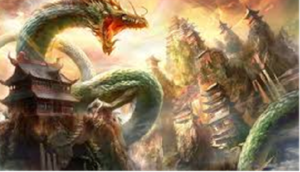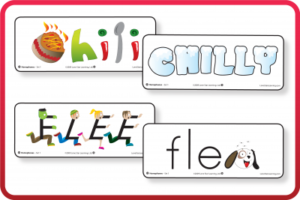Hello everyone! Just to reiterate – it is not a requirement to complete all of the tasks listed. We have said that you should complete the Guided Reading, English and Maths activities over the week and work on anything else in addition if you wish/can. Please don’t feel that by saying this we are devaluing home learning or that it is not important. It is crucial to set time aside some to do school work. Again, don’t feel restricted by these activities either; if your child is motivated to do other reading, writing or Maths that is better centered on their interests, feel free to do these instead.
Here is this week’s home learning…
Topic:
Find the year you were born, what Chinese animal are you? How about members of your family? Can you research what this means?
According to Chinese legends, what traits do people born in these years have? Does this sound like you? Record your thoughts as creatively as you’d like.
Feeling creative? Make your own Chinese dragon using the link below.
https://www.twinkl.co.uk/resource/t-t-9072-chinese-new-year-paper-craft-dragon
English:
Use the image below and the word mat to write a description of the dragon. Try to include powerful adjectives, similes and fronted adverbials (to show where, why or how).
For example: Glaring red eyes stared down and its wide cavernous nostrils flared. His huge hulk of a scaly green body slowly moved up and down with each furious breath. Without warning colossal explosions of flames erupted from its mouth, shooting wildly in all directions, like a ferocious, erupting volcano.
Guided reading:
Read the following Chinese fairy tale wither on your own or with a grown up. Talk about the story and make sure you understand it. Here are some comprehension questions for you to discuss and respond to:
1, What are the four Dragons that lived in the Eastern Sea?
2. What did the four Dragons see while they were playing hide-and-seek in the cloud?
3. Based on the fairy tale, who can give rain to the people on earth?
4. How did Jade Emperor respond to the Dragons request?
5. What happened the next day? Did it rain?
6. What was the Long Dragon’s idea about making rain?
7. What did Jade Emperor do when he learned that the Four Dragons made rain without his permission?
8. What did the Four Dragons become in the end?
CHALLENGE: Think about fairy tales that you know (Little Red Riding Hood, Goldilocks and the three bears, Hansel and Gretel etc) How is that fairy tale similar or different to the Chinese fairy tale?
https://www.worldoftales.com/Asian_folktales/Asian_Folktale_6.html
Spelling
Below is a range of homophones. Can you use a dictionary or the internet to find the different definitions for each of these words?
Can you now write/ draw these homophones in a way that will help you remember? For example-
Maths
Below is a lesson to help you revise your angle work from the last couple of weeks.
https://www.thenational.academy/year-3/maths/to-revise-angles-year-3-wk4-5
Can you remember when we learnt about perpendicular lines? Here is a reminder:
https://www.thenational.academy/year-3/maths/to-identify-perpendicular-lines-year-3-wk5-1
Science
Hopefully from the BBC Bitesize videos from last week’s home learning, you found out that forces are pushes and pulls which act on objects. This week we are going to be investigating one of the forces in closer detail. Friction is a force which resists movement between two objects. It slows things down and tries to stop them moving.
Our investigation compares how things move on different surfaces. Follow the instructions here…#
We recommend trying out surfaces such as sandpaper, a towel, tin foil, lino, carpet and bubblewrap or corrugated cardboard and using the 2-star Recording Sheet, found here:
Music from Mrs Sumba
Go to the website below and watch Naomi Wilkinson’s video about Heitor Villa Lobos.
https://www.bbc.co.uk/teach/ten-pieces/classical-music-heitor-villa-lobos/z4nsmfr
Why was Heitor Villa Lobos considered a musical trailblazer?
Now listen to the whole piece on the 2nd video.
Choose your own form of transport. What is the main rhythm it makes? (For example what rhythm might the pedals on a bike or the oars on a rowing boat make?
How could you play this rhythm? (Perhaps you could recreate the rhythm of the oars by splashing your hand in a bowl of water.)
What other sounds does your transport make? How can you add these? Could other members of your family join in so you can layer the sounds?
Science from Miss Stapley
Homemade Lava Lamp
https://www.rigb.org/families/experimental/homemade-lava-lamp
Experiment with objects of different shapes and sizes. See what makes a difference to whether something sinks or floats in water.
Learn how an object’s density affects if something is likely to sink or float.
https://www.rigb.org/docs/lavalamp_infosheet_0_1.pdf
Questions to ask children:
- Before each activity: can you predict what will happen? Why do you predict that? (For example, can you predict what will happen when we squash the tin foil really tightly?
- Can you predict what will happen if we use metal spoon instead of a plastic one?
- Can you predict what will happen if we peel the fruit?) Why does the diet drink float while the non-diet one sinks?
- What do you think will happen when we pour the oil into the glass of water? Why?
- What do you think is in the bubbles that are rising up in the lava lamp? Why do you think they sink back down again?
Going Further:
- You can give your child or children a lump of plasticine and explore how to mould the plasticine into shapes that float. Discuss what the floating shapes have in common compared to shapes that sink.
- The density of an object affects its buoyancy. You can learn more about this and how density affects whether something sinks or floats here: http://bit.ly/
- Buoyancy You can try to make a ‘density tower’ by floating liquids of different density on top of each other, as shown in this video: http://bit.ly/DensityTower
- Here’s a quick lava lamp using fizzy water – http://bit.ly/FizzyLavaLamp
Art Challenge from Mrs Pearson
Read all about it! St Peter’s are IN THE NEWS!
For this week’s Art Challenge I would like you to produce some art using old newspapers or magazines! It can be anything from cutting out shapes and creating your own abstract art, or landscape, to making something using Paper Mache. What you make can be left black and white or even painted (using watercolours is very effective). Whatever you create I’m sure you will ‘Make the headlines’ on the Art Blog!
Ideas to inspire you:







